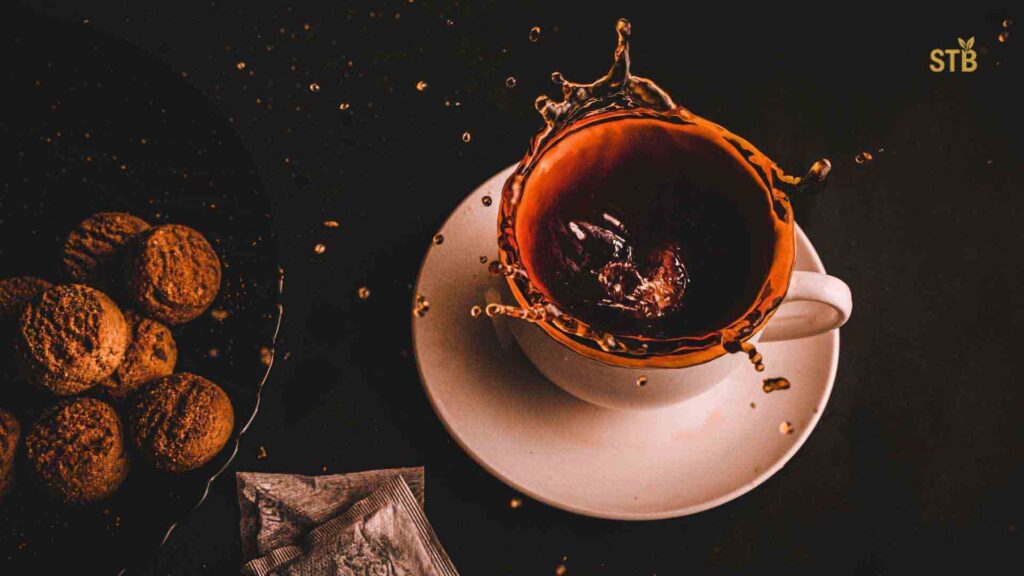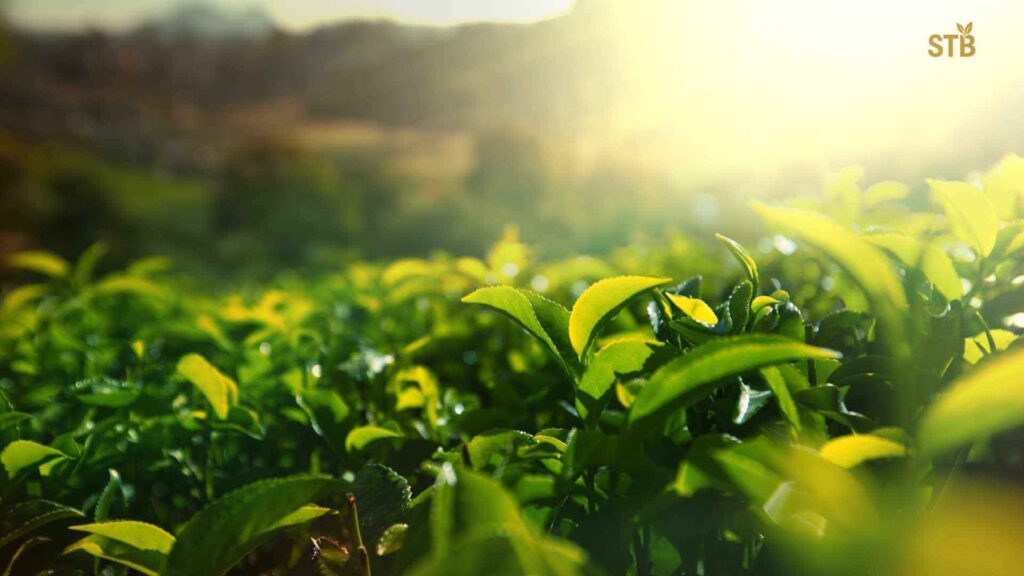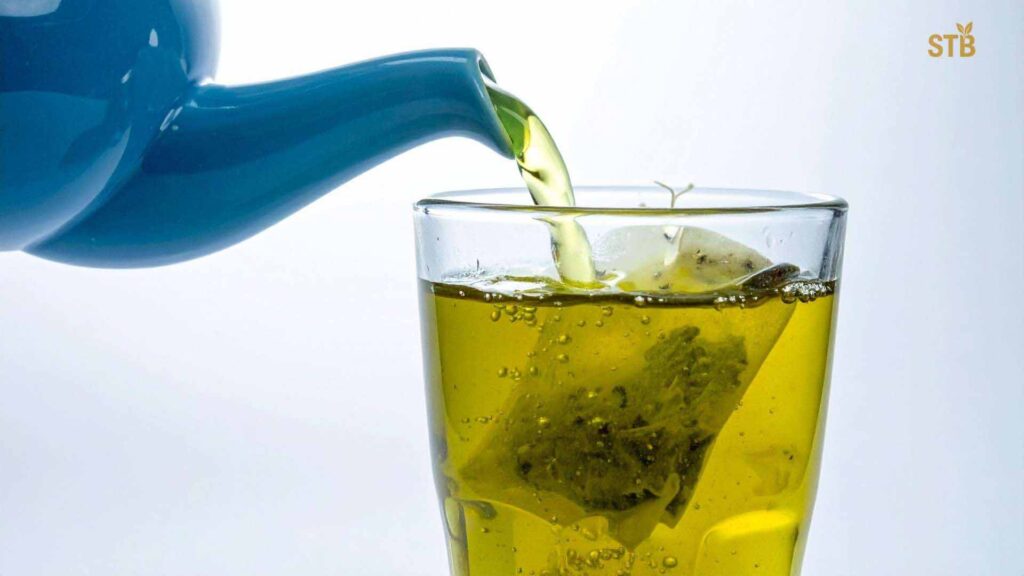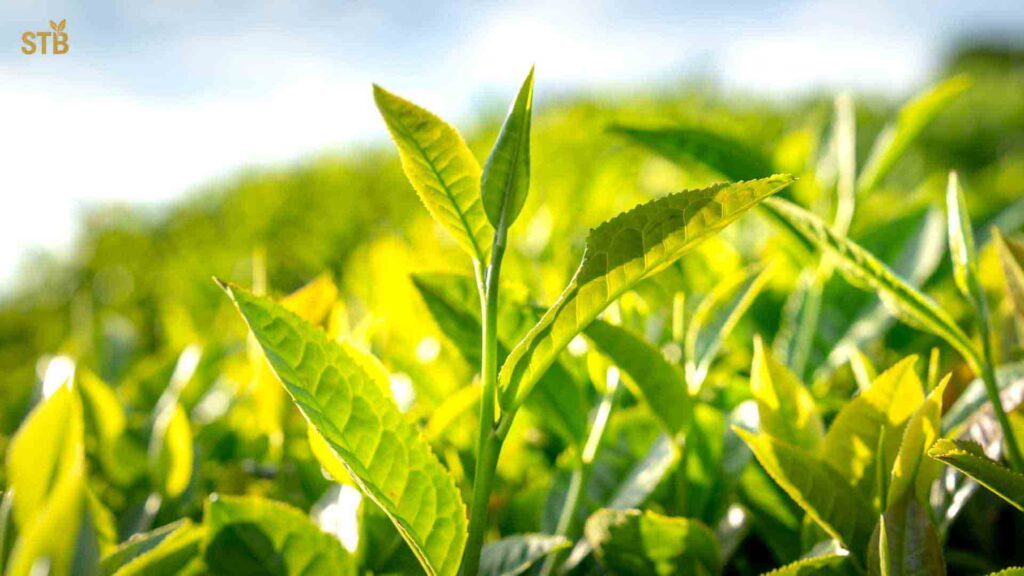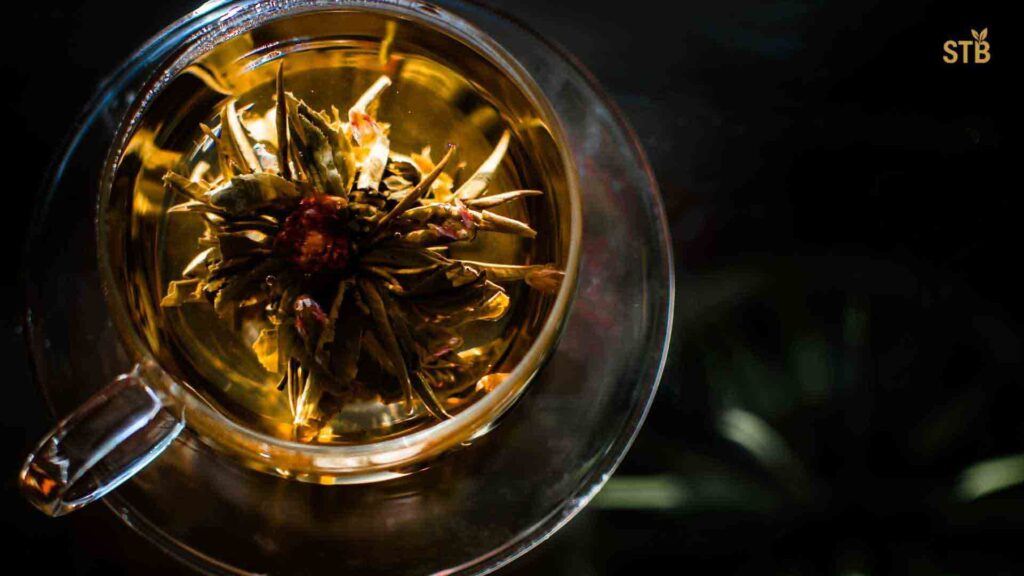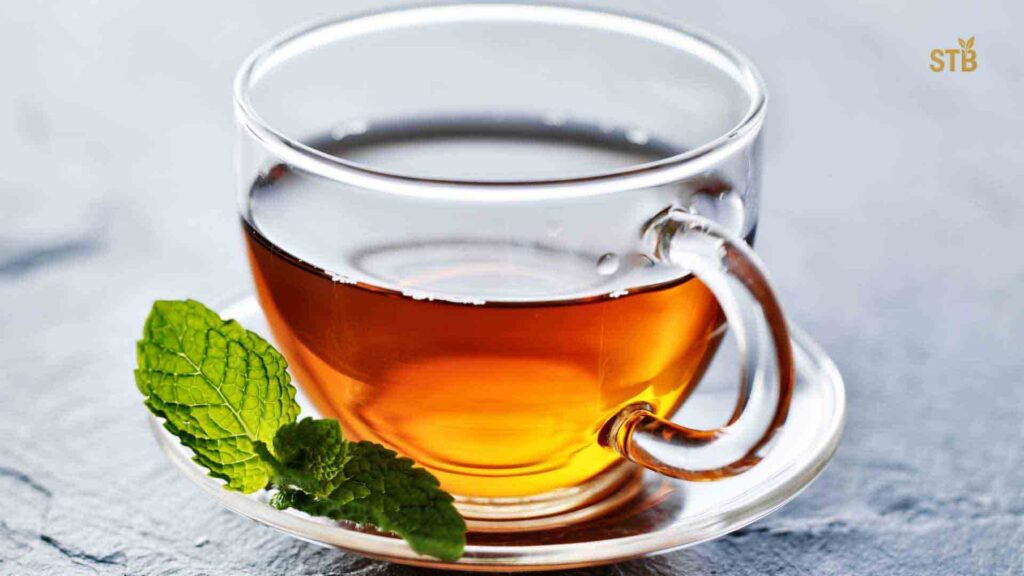The black tea industry defines a great deal of the Bangladeshi economy with the utmost infusion, while it inspires from Sylhet at the same time many provinces in the country contributing through foreign exchange earnings, supporting ancillary industries and providing labor to rural families. It has a strong cultural background, where drinking customs provides deep social interaction to express national pride along with outstanding health benefits through rich strength giving properties due to its oxidation elements.
However, those who are facing challenges like climatic changes, labor problems, and external global competition may adjust their differences through organic plantation as a sort of innovation further by introducing Tea Tourism and strategic marketing for sustaining development that will finally put them up on international recognition for having Bangladesh’s ‘Golden Brew’.
Black tea is fully oxidized. This is the production of the most popular type of tea in Bangladesh and, hence, in general it will be described here. During manufacture, leaf oxidation to full blackness develops characteristic malty, fruity or even smoky flavor notes. The main black tea variety found growing in Bangladesh shares with its close neighbor India the Camellia sinensis assamica variant. This is a large-leafed plant that loves warm, moist regions.
The flavor, besides being varietal, is also based on the method of processing. CTC (cut, tear, curl) is the predominant method used in this region. It makes a strong, brisk brew—the reason why black tea takes so well to milk and sugar (and thus speaks to local palates, therefore explaining its cultural dominance).
Even from the same species of plant, black tea from different regions can taste very different because of soil and climate variation plus processing techniques. For example, one may note citrus and spice notes in Ceylon tea—a single-origin black tea from Sri Lanka—besides a lower content of tannin (the less astringent than some Indian black teas), which already shows that within ‘black tea,’ there is an intricately nuanced world of flavor waiting to be discovered.
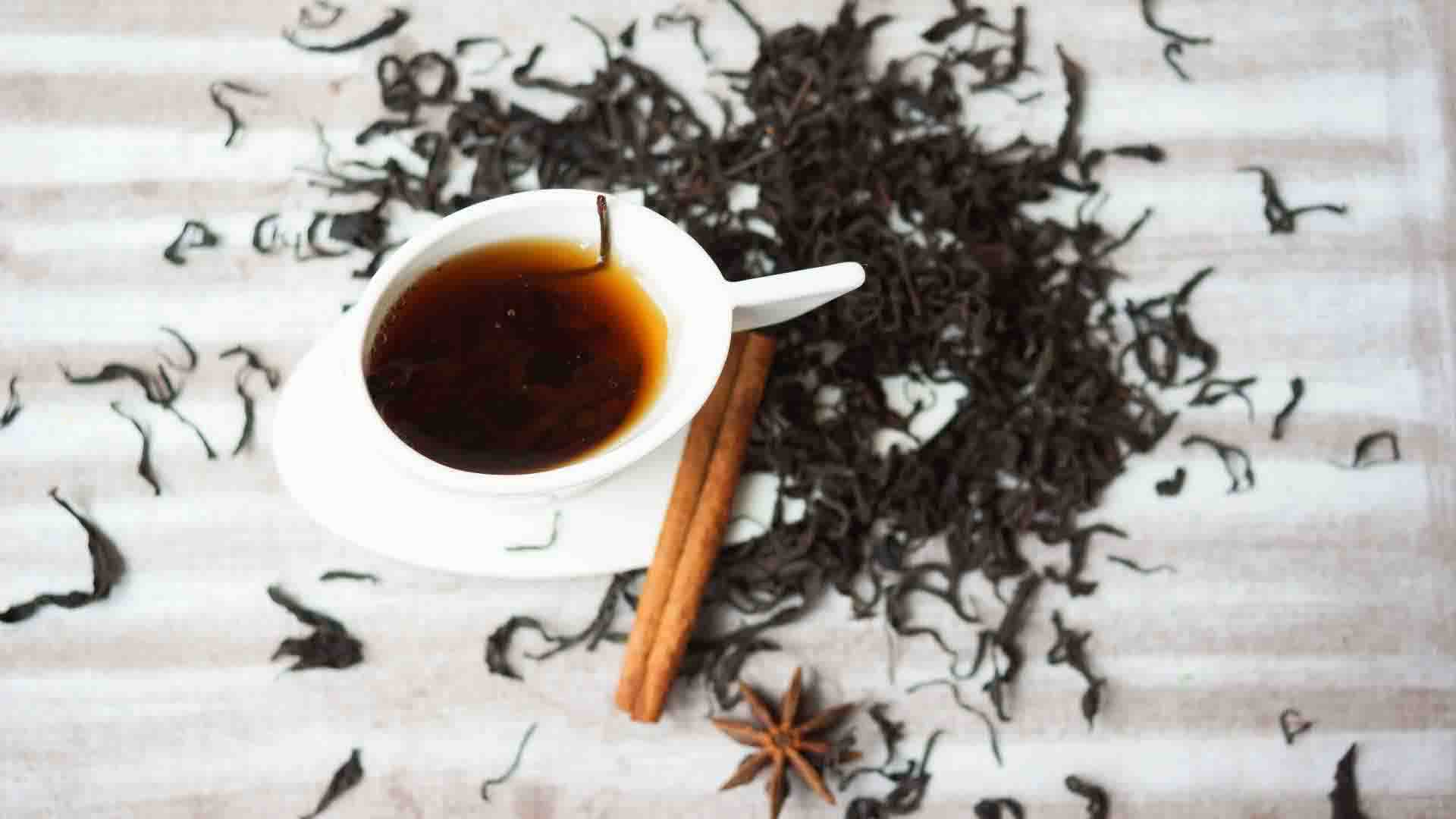
Historical Roots of Black Tea in Bangladesh
Black tea has its roots in the fertile hilly lands of Sylhet, where it was first found that the combination of fertile soils with a humid climate favored tea growth. Indigenous communities were aware of wild tea plants long before organized commercial cultivation began here. It was only from the 19th century that systematic plantations took root when local entrepreneurs and landowners realized the potential prospects of this golden brew.
The natural environs- rolling landscapes, heavy rains, and rich soils- shared an environment that would impart special attributes to Bangladeshi black tea for generations. The colonial period is integral to the history of tea in Bangladesh since it is during this time that substantial investment and industrial know-how were brought into the region under British rule.
Since European markets presented a ready demand for tea, colonial governments set up large plantations and adopted modern processing techniques to increase output. This is when the Sylhet tea estates came into being with British planters bringing in machinery as well as skilled hands to maximize every aspect of the cultivation and manufacturing process. Consequently, Bangladeshi black tea started gaining international fame for its strong taste and deep color.
For decades, black tea in Bangladesh was not static; it evolved with changing needs of the local and international consumers. It was through the introduction of selective breeding of tea plants and sustainability in the farming practices that yield and quality were enhanced.
The diversification of the industry through more smallholder farms empowered locals; also tastes on the market diversified. Today, Bangladeshi black tea keeps updating its product by applying modern techniques to traditional expertise so that it can keep its place as a valued golden brew at home but much more importantly abroad.
The Sylhet Region: Heartland of Bangladeshi Tea
Sylhet is located in the northeastern part of Bangladesh. This region has rolling hills and loamy soil where fertility is attributable to a subtropical climatic condition with sufficient rainfall. Therefore, conditions favor the vigorous growth of quality tea bushes. Natural factors do not only bring about good vegetative growth and high yield but also give special taste attributes to tea.
The result has been a consistent production of leaves from this region having bold taste characteristics as well as aromatic notes that put Bangladeshi black tea at a premium both locally and internationally. Sylhet hosts some of Bangladesh’s most famous tea gardens, with a prolonged history dating back to the colonial period. Malnichhera, Srimangal, and Lakkatura estates have kept their names for producing high-quality black tea.
Fame not only for quantity production but also for being the keepers of well-honed cultivation techniques passed down through generations; what comes out of Sylhet is indeed quality-oriented, reflecting a plentiful heritage therein with an orientation toward excellence in every cup brewed from the leaves.
Tea develops a different value in the culture of Sylhet. For example, from the roadside tea stalls to classy get-togethers inside family homes, sharing black tea is not a drink but rather some ritual that keeps people connected and communal.
The practice becomes more emphasized during an occasion where serving tea would be equated to hospitality and warmth. With this area being continuously branded for its fine quality black tea, the cultural significance of tea in Sylhet intensifies further deepening its place as an everlasting mark between the bonds of Bangladeshi identity.
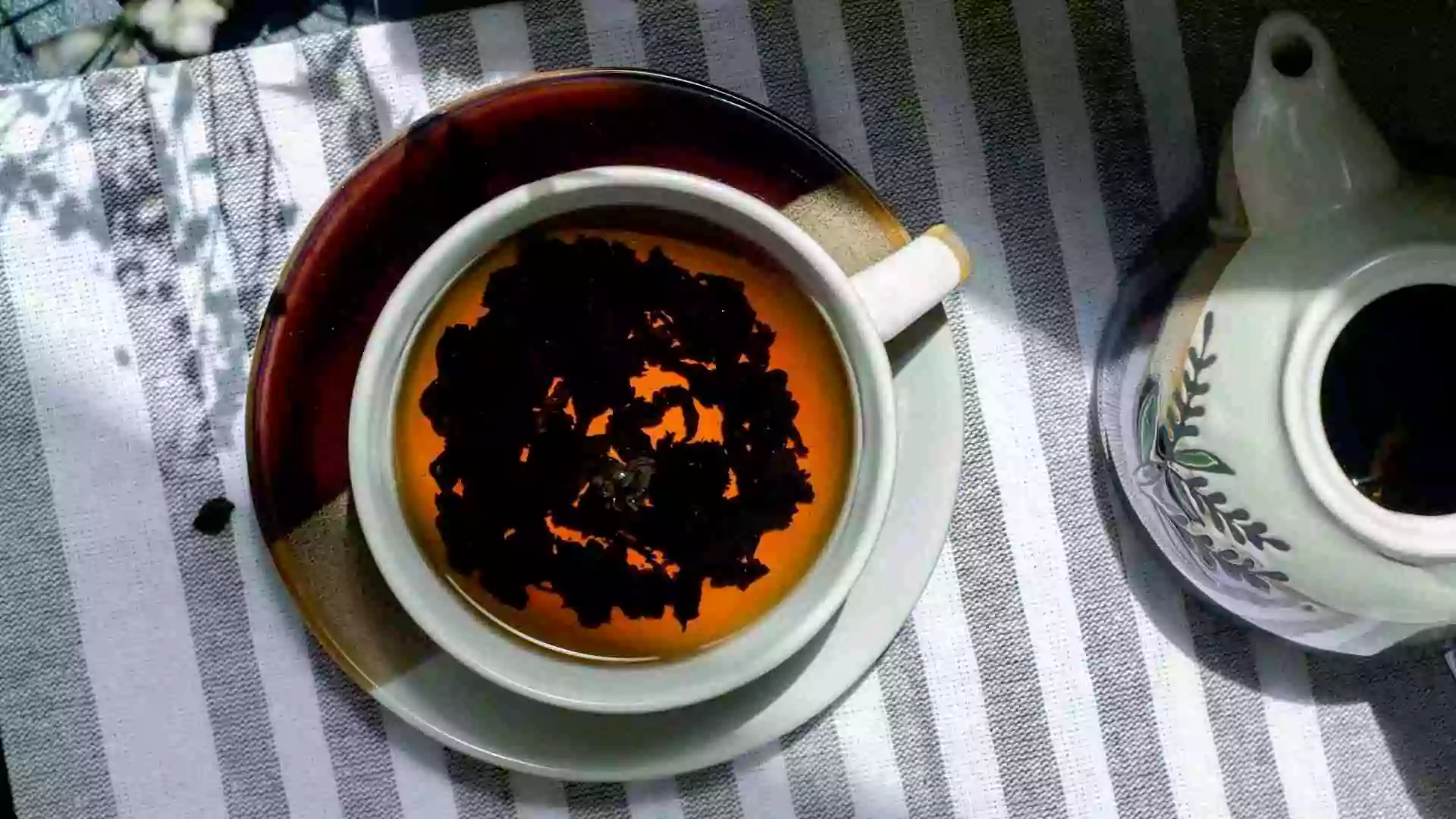
The Art and Science of Black Tea Cultivation
Tea gardens have always been said to lie at the heart of successful black tea cultivation in Bangladesh. One predominant practice in that region, so highly put into consideration, is choosing a garden site based mainly on soil fertility drainage and elevation above sea level.
Once land has been identified, it is subjected to careful clearing and leveling meant to include good water management systems as well as root development; hence, young tea plants thrive well where nutrients are readily available from aerated soils. Also, strategic planting patterns further optimize sunlight and airflow which vastly improve healthy leaf growth. These set flavors that define black teas an immediate taste note.
Tea gardens in Bangladesh use both modern and traditional cultivation techniques. Manual plucking and organic fertilization are parts of the traditional method; however, it is more accurate to say that this region has a history of manual plucking leaves with great care and minimum disturbance to the environment.
Some new innovations introduced in the larger estates include mechanized pruning scientific pest management as well as automated irrigation systems. The combination of these two ensures the high quality standard of tea estates while sustaining or even increasing the global demand. This balance between heritage and innovation creates a sustained reputation for Bangladeshi black tea.
Conservation of both the community and the environment is a major drive toward sustainable practices in black tea. Organic composting, integrated pest management, and the use of renewable energy sources that reduce their ecological footprint are activities by several estates in Sylhet.
In so doing, organic composting improves soil health and thereby increases biodiversity. Social sustainability involves fair labor practices and community development on a small scale. Stepping forward with sustainability will ensure the future of the black tea industry in Bangladesh and, at the same time, preserve much of the region’s natural and cultural wealth.
Harvesting and Processing: From Leaf to Golden Brew
The picking method very significantly influences the final taste and quality of black tea. In the Sylhet region, as elsewhere in Bangladesh, hand-picking is preferred for fine black teas since this method allows selective plucking of only the tender top two leaves and a bud that has maximum content of oils and flavors. Such careful harvesting saves much damage to the leaves, thereby producing a delicate and aromatic cup.
On the other hand, machine harvesting is more appropriate for large-scale operations because it picks everything-leaves plus stems which will be all processed together with the final product and dilute its quality and character. This is a choice between tradition and quality on one side, and modernity demanded by today’s tea market on another.
Once picked, the alteration of fresh tea leaves into the “golden brew” starts with a series of steps that include withering, rolling, and oxidation. Withering takes out some water content in the leaves making them soft and ready for rolling. Rolling then breaks up the leaf cells and lets out natural enzymes and juices which begin an oxidation process; this is major in flavor development and color formation associated with Bangladeshi black tea.
The degree of oxidation gives final taste notes from strong and malty to light and flowery. Every single stage has to be timed perfectly well and handled expertly because even minor changes can bring about differences in the aroma, color, and mouth feel of the tea.
Firing and grading are the last two steps of black tea production. Firing is a process in which heat is applied to already oxidized leaves so that all enzymatic action within the leaf stops, flavor inside the leaf is locked, residual moisture content reduced and any possibility for spoilage eliminated.
After firing, leaves are graded by size, shape and general appearance – factors that go a long way in determining their market value as well as appropriateness for different blends. It reflects not only the quality of harvest plus processing proficiency but offers an average consumer to choose teas grading corresponding to desirable taste plus brewing characteristics.
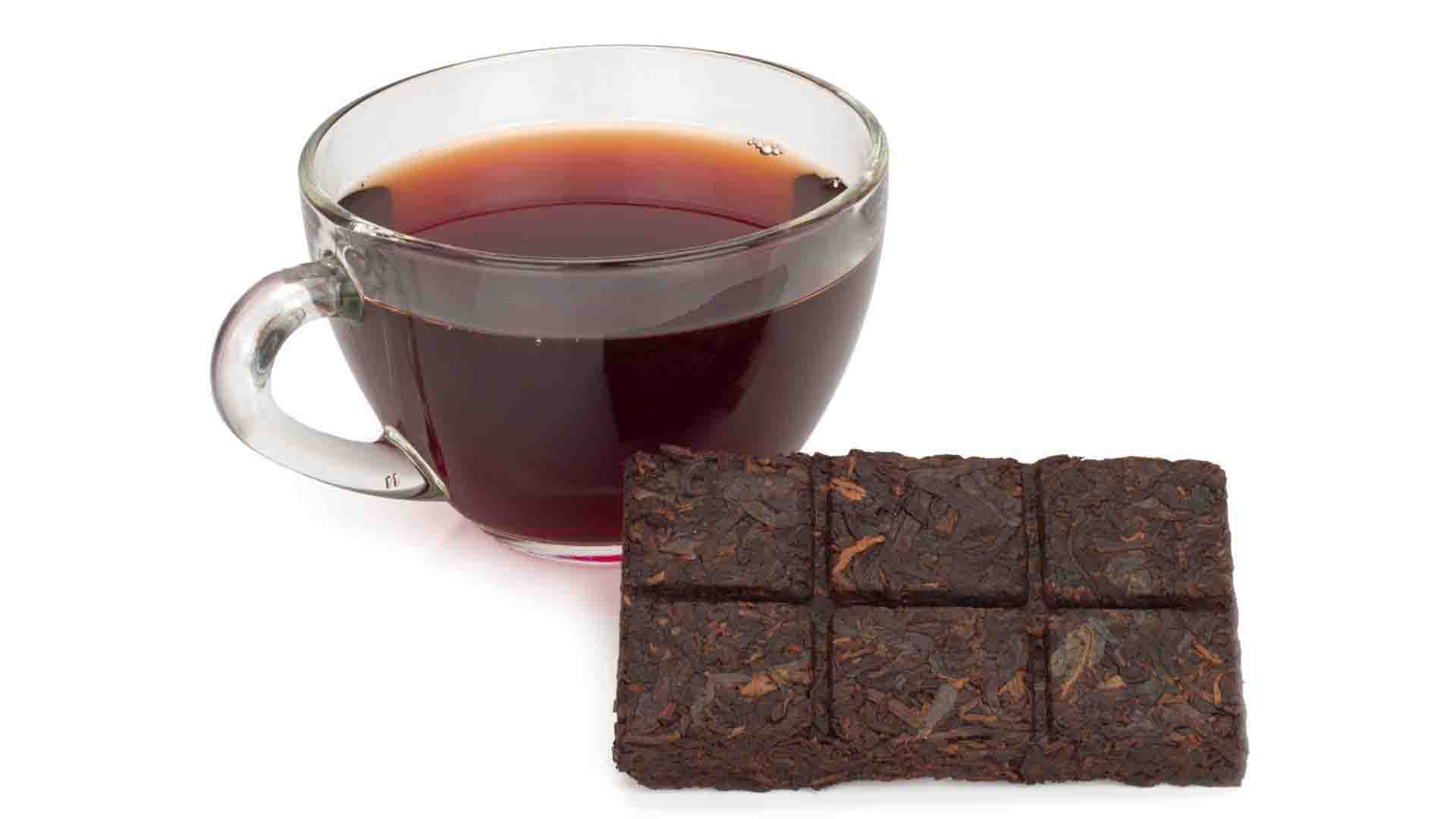
Distinctive Qualities of Bangladeshi Black Tea
The taste of Bangladeshi black tea, most particularly those grown in Sylhet, speaks much of flavor due to excellent cultivation and different growing conditions. Unlike elsewhere, black teas from Bangladesh carry a brisk yet very sweet taste with undertones of malt that rolls over the palate with every sip.
Experts have said there is always a faint note of flowers and light stringency found which makes these teas drinkable both in their pure form and as blends with milk. For instance, those from Sreemangal district are known for holding strength together with carrying scent hence showing detailed processing mingled with the area’s mineral-bearing earth.
They do not taste good only; Bangladeshi black teas are also popular for the colorful look and extremely sweet smell that they give. The color a good golden brew gives is an indication of both quality and freshness. Many describe the aroma as inviting, having deep earthy undertones combined with fresh floral notes.
This distinct look and smell make black teas from Bangladesh stand out compared to many other regional types; hence, the favorite type among tea lovers who like their beverage attractive in both visual and olfactory senses. Teas from this region would be even more attractive because strong antioxidants here add up to pleasure plus possible health benefits.
Bangladeshi black teas have excellent body and strength when compared with other world-famed black teas like those from Assam or Darjeeling. There is powerful malty intensity in the flavor of Assam teas, and flavors are delicately muscatel in Darjeeling. Bangladeshi teas balance flavor with strength; they are neither too strong nor weak.
One of the noteworthy pluses for these teas is that every sip carries a full range of tastes—both strength, which reminds one more classically with South Asian teas, as well as some added layers of taste that would attract an international market toward more subtle complexity.
This versatility is not restricted only to the enjoyment of tea itself but extends further into its application as a base for milk tea or spiced blends that reveal even more about its adaptability and enhanced qualities on the international scene.
Economic Impact of Black Tea in Bangladesh
The black tea industry is a major component in the economic structure of Bangladesh with a very large contribution to national GDP. Black tea, one of the country’s largest agricultural exports, especially from regions like Sylhet, brings substantial foreign exchange and supports several ancillary industries on the chain such as packaging and logistics companies and local marketplaces, among others.
The amount accrued through growing and processing as well as exporting this commodity leads to enhanced fiscal strength for the government of Bangladesh so that more infrastructure investment takes place in villages subsequently. Above all, such an emphasized stage for Sylhet tea on international platforms uplifts the image rating of this country as one of the respected tea-producing countries for sustainable economic growth.
Black tea farming in Bangladesh creates many jobs, mostly where other work is hard to find. Tea farms give pay to thousands of workers including pickers, factory hands, drivers, and support staff. This lowers poverty and raises living standards in these areas.
Since this field needs a lot of hands to work, both men and women can join which helps to bring gender fairness and boost rural families. Also, the skills gained from growing and making tea help build a stronger workforce that can deal with new needs in farming and markets.
It is in these export markets that Bangladesh black tea managed to carve out a niche, flavored distinctly from the rest of the world, particularly Europe, the Middle East, and North America. Flavors emanate from its Sylhet region to coax buyers into making purchases.
Premium prices lead to more profitability not just for exporters but local producers as well because international demand continues an ever uptrend. This type of growing internationalization drives on one hand export earnings but also transfers dynamism and innovation into quality improvement within the domestic tea industry.

Black Tea Traditions and Rituals in Bangladeshi Culture
Social and family tea-drinking customs are typically observed as a daily practice at the surface of hospitality and unity. In most households, offering black tea to guests is considered a gesture of warmth, it is an expression that happens in the real initiation of conversation and social bonding.
Within families, it has created a ritualistic practice that happens either in the morning or evening time wherein the members sit together share some news discusses matters or just warmly appreciate each other’s company. This makes the cohesion of the family members stronger gives some organized time to relax and get connected with one another during the day.
The preparation and service rituals are always symbolic of sharing moments togetherness accompanying some light snacks reflects valuing simple pleasures. Tea is the main element, which easily merges into the festivals and social gatherings conditions held at different parts of Bangladesh — turning regular hours into happy times.
That black tea symbolizes good will and cheerful mood at religious functions like Eid or Pohela Boishakh, wedding ceremonies, or any village fair. The act of communal tea drinking creates belonging and welcomes everybody from all walks of life performing the same ritual; thus, expressing hospitality yet building social coherence during happy moments based on traditions.
Its provision was so normal to these occasions that often it is deemed as part and parcel of the celebration itself. Tea, in the mind and soul of Bangladeshis, is far more than just a tasteful drink; it is an allegory of harmony, strength, and patriotism—because in its blackened form coming out from Sylhet areas of the country black tea symbolically signifies the heritage wealth of Bangladeshi people with their undetermined willpower.
The process of making this beverage travel all means from plantations to a common cup potently expresses unity through diversity which ultimately forms a specific national identity by Teas’ various cultural elements into literature and art as a welcoming emblem filled up with hospitality for hopes welcomed in literature and arts. Coming under such direct symbolism to its very core, black tea does indeed assume a significant role within Bangladeshi culture at home while it maintains utmost respect on international platforms.
Health Benefits Associated with Black Tea
Black tea, particularly the teas from Bangladesh’s Sylhet region are known not only for their great taste but also for some stunning health benefits. Perhaps what is most popular about black tea is the fact that it contains a healthy dose of antioxidants, particularly polyphenols and catechins which help fight oxidative stress within the body.
Wellness experts have noted that compounds in black tea may be crucial in general wellbeing as they help to neutralize free radicals-unstable molecules that damage cells and lead to chronic conditions. As more people turn to natural options for improving wellness, the reputation of black tea as a healthy beverage continues to soar. The daily consumption habit offers much more than just comfort; it provides an actual boost toward feeling well and healthy.
Black tea has long been used in the folk medicinal practices of Bangladesh and South Asia even before the wellness wave. Members of several generations sat at black tea as a home remedy for sundry complaints, warmed by its warming and comforting attributes. In most households, black teas infused with ginger or lemon are taken for colds and indigestion.
This proves not only how varied the applications for preparation of this infusion are but also what important medicinal value it holds locally. Over time, such traditional uses have become inculcated into daily activities thus reinforcing black tea’s position as more than just a beverage but rather a healing tonic.
Scientific interest in black tea has significantly increased recently, primarily based on the perception that it may have health benefits. A steady intake of black tea is often associated with good results related to heart support and weight management, besides improving factors related to mental alertness.
Studies have indicated that black tea flavonoids lower blood pressure as well as the risk for a stroke precipitating myriad reasons why this nutrient should find its place in the regular balanced diet. Meanwhile, studies are still ongoing regarding effects about immune health and inflammation, forming more concrete reasons why this golden brew is much loved besides taste pleasure for contributing to a healthy lifestyle.
Challenges Facing the Black Tea Industry
Climate change has very significantly threatens black tea cultivation sustainability in Bangladesh, particularly from regions like Sylhet where the gardens respond so sensitively to any kind of environmental fluctuations. Unreliable weather conditions precipitate yields with a long dry spell accompanied by high temperatures that lowers yield and increases susceptibility to pests and diseases.
This has been further aggravated by soil erosion and deforestation; hence, the estates cannot easily maintain both quality and quantity of their harvests. It is, therefore, forcing many of them to implement different forms of adjustments in their farming practices or bear the costs for the mitigation investment which strains their livelihoods as well as resources. All these environmental factors impose new types of challenges that strongly call for support systems within an industry.
Labor issues and fair trade concerns continue to haunt the black tea industry in Bangladesh despite the economic contributions of this sector. Tea workers mostly live on low wages with poor accommodation facilities and provision of healthcare and education for their children who are supposed to be beneficiaries of such a historical legacy, which has continued to sustain its development over the years in these regions.
Labor rights inadequacy and representation have been factors that periodically precipitate unrest that disrupts production activities. Increasing demands come from international buyers, along with many advocacy groups urging more transparent actions while conforming to fair trade standards. Fulfilling such demands is a matter of ethics; it is also in their best interest if they want long-term stability and the ability to compete internationally.
It faces very strong competition from other big tea-producing countries of the world, like India, Sri Lanka, and Kenya. These countries normally have better infrastructure large scale production as well as more avenues to international markets thus making it difficult for Bangladeshi tea to get a good share of the world market.
Besides, world tea prices keep changing as well as consumers’ preferences which add more dynamism to the competitive environment. The product quality, branding, and niche markets that can probably be found where unique flavors of Sylhet tea and “golden brew” are promoted will probably keep this firm in this environment. Competitive pressure is therefore an adversity plus a window for novelty within the domestic sector.

The Future of the Golden Brew: Innovations and Opportunities
The Golden Brew, or Bangladeshi black tea, is increasingly seen to be driven by specialty and organic teas going into the future. As consumers around the world become more health-conscious while acquiring refined palates, there is increasing demand for novelty teas produced with minimal environmental footprint.
Bangladeshi producers respond to this new trend as they experiment with different organic cultivation practices and tap into higher-end markets—such as hand-blended and small-batch teas that carry forth the expression of regional terroir. The transformation allows not only further value addition on traditional black tea but opens up markets for rare and artisanal offerings in new product lines that have recently entered high ends like Golden Bengal Tea commanding high prices and international attention.
Tea tourism at the green estates of Sylhet is another innovative effort. This is where the country’s best black tea grows in huge quantities. The beautiful tea gardens of this region accompanied by some old houses and a history-packed cultural background provide visitors with great opportunities for real experiences.
Hence, from guided field walks to tasting events and boutique stays that host both local and foreign tourists Bangladesh becomes beneficiary new revenue leads for the community. However, through tea tourism, an avenue where the story relating to the narrative legacy of Sylhet’s “golden brew” can be told presents itself as it encourages more interest and respect amongst consumers towards Bangladeshi black tea.
Appropriate positioning of the Bangladeshi black tea as a global premium product, supported by effective marketing initiatives-including recent campaigns spotlighting its distinctive taste profile and rich heritage-would certainly attract broader consumer interest through digital marketplaces and specialty retailers from this region.
This would also further enhance quality and sustainability perception, pushing these producers up to international recognition. The lead marketing strategies are: Authentic Sylhet tea-Organic and fair trade credentials-Limited-edition blends that will give exposure to Bangladeshi black tea more than before while creating a long-term attachment with tea lovers for keeping the golden brew alive in changing times.
Benefits And Limitations
Benefits:
1. Black tea from the Sylhet region, Bangladesh carries a very rich flavor profile with robust, malty, and aromatic notes that it offers to taste buds of tea drinkers.
2. Black tea farming and exports play a very crucial role in adding up good numbers to the Bangladeshi economy and creating jobs while supporting rural lives around the country.
3. Polyphenols mainly found in black tea act as strong antioxidants that will be regarded most probably for improving heart health by reducing cholesterol in the blood and increasing mental status.
4. It is thus truly said that this great nation has gained its traditional practice of growing and drinking black tea because it certainly helps foster nationalism.
5. Black tea represents flexibility since it can be taken plain or with milk or as blends, therefore adjusting itself to taste different preferences and customs from all over the world.
Limitations:
1. Vulnerability to Climate: Black tea grows from Bangladesh in conditions of vulnerability to climatic odds, such as rain and flood, or any condition of climate change.
2. Consistency in Quality: Tea quality is inconsistent due to different agricultural practices and processing between one estate and another.
3. Market Competition: Bangladeshi black tea faces stiff market competition with the highly traditional black tea from other big producers like India, Sri Lanka, and China at the world stage that impacts its price. 4. Labor Issues: Laborers are found working at very low wage levels with bad working conditions plus insufficient medical facilities and educational facilities for children.
4. Lack of Branding Globally: Even having very special characteristics, this has a much more minor international profile compared to others; hence market expansion is hampered.
Solutions:
1. Climate Resilience: Invest in research and adoption of climate-resilient tea plant varieties and improved irrigation systems to mitigate weather-related risks.
2. Quality Assurance: Implement standardized quality control measures and certifications to ensure consistent product quality across different producers.
3. Marketing Initiatives: Launch global marketing campaigns and participation in international tea expos to boost the profile of Bangladeshi black tea.
4. Worker Welfare Programs: Enforce fair labor practices, increase wages, and improve access to health and education services for tea workers.
5. Brand Development: Develop strong branding and geographical indication (GI) status for Sylhet tea to distinguish it in the global market.
Sylhet Bangladeshi black tea not only offers a very tasteful cup with all its cultural and economic values but also brings a good sum of money home-though it is facing huge climate risks, problems with consistency in quality, labor issues, and lack of an international profile.
Better farming, more stick on the quality, keeping more open doors for workers and better branding as well would maximize the good sides while minimizing the bad ones which would bring out the real value to both producer and consumer at the end.
Bangladeshi black tea, led by Golden Brew, is a reflection of history, culture, and agricultural strength. Meanwhile, good weather and careful growing in the Sylhet area have made a taste note that lets Bangladeshi black tea stand out all over the world.
Besides problems like nature harms and sales fight, this field keeps getting better with green making more tourists coming for tea and planned selling acts. As these chances are used by Bangladesh, its black tea business will have a bright path which means keeping Golden Brew as a loved mark of pride plus an important envoy bringing taste to world tables.

Faqs
Q: What makes black tea from the Sylhet region of Bangladesh unique compared to other black teas?
A: Black tea from the Sylhet region is distinguished by its rich, malty flavor profile, bright golden color, and fragrant aroma, thanks to the area’s unique geographical and climatic conditions. The fertile soil, ample rainfall, and misty hills create an ideal microclimate for tea cultivation. Additionally, traditional processing methods and careful hand-picking further enhance the quality and distinctive characteristics of Sylhet black tea, setting it apart from teas produced in other countries like India, Sri Lanka, or China.
Q: How has black tea cultivation evolved in Bangladesh since its early days?
A: Black tea cultivation in Bangladesh began during the British colonial period, with the establishment of the first tea gardens in the mid-19th century. Initially, the industry was heavily influenced by colonial practices and management. Over time, local expertise grew, leading to the adoption of both traditional and modern cultivation techniques. Today, sustainable practices and technological advancements are being integrated to improve yield, quality, and environmental stewardship, while preserving many of the artisanal methods that give Bangladeshi black tea its unique character.
Q: What economic role does black tea play in Bangladesh?
A: Black tea is a significant contributor to Bangladesh’s national GDP and is crucial for rural economies, particularly in the Sylhet region. The industry provides direct and indirect employment to millions, from tea garden workers and factory staff to those involved in transportation and export. Additionally, black tea is a major export commodity, with international markets in Europe, the Middle East, and North America, bringing in valuable foreign exchange and strengthening the country’s economic position.
Q: What are some traditional customs and rituals associated with black tea in Bangladeshi culture?
A: In Bangladesh, black tea holds a central place in social life and hospitality. Tea is commonly served to guests as a symbol of respect and warmth. Family gatherings, local festivals, and community events often feature tea-drinking rituals, and the beverage is an integral part of daily routines across diverse social strata. In Sylhet, tea stalls—known as “cha-er dokan”—serve as communal spaces where people gather for conversation and camaraderie over cups of strong, aromatic black tea.
Q: What challenges does the Bangladeshi black tea industry currently face, and what opportunities exist for its future?
A: The black tea industry in Bangladesh faces several challenges, including climate change impacts, environmental degradation, labor issues, and increased competition from other tea-producing countries. These factors threaten both production levels and the livelihoods of those dependent on the sector. However, opportunities for growth exist through the development of specialty and organic teas, the promotion of tea tourism—especially in scenic Sylhet—and innovative marketing strategies aimed at expanding the global reach of Bangladeshi black tea. Emphasizing sustainability and fair trade can also enhance the industry’s future resilience and reputation.

